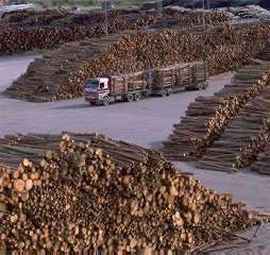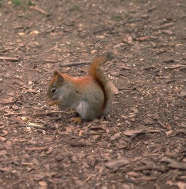Why do we need to conserve biodiversity?
One way of explaining biodiversity is the phrase - ‘when we tug at a single thing in nature, we find it attached to the rest of the world.’ All living creatures need other creatures and plants in one way or another - even if the connection is not always clear. Biodiversity is about the diversity - the range - of different living things and systems in an area. The more plant, insect and animal species there are in one area the greater the biodiversity and the healthier the ecosystem!
A project which reintroduced wild wolves into Yellowstone National Park in North America led to enormous changes to the ecosystem. Until recently many people, including ecologists and scientists, didn't understand the unique importance of top predators in an ecosystem - specifically the 'trophic cascade' effect. A trophic cascade is a process which starts at the top of the food chain, working all the way down to the bottom.
The wolves in Yellowstone National Park ate deer which had grazed the vegetation bare, so plants were able to flourish again - areas regenerated and trees were able to grow. This provided food and shelter for hundreds of other animal species; insects, mammals, birds, birds of prey, amphibians and fish. With more plants, trees and animals the soils improved and became stronger - less prone to erosion, drought and flooding.
The more biodiversity an area has, the healthier it is because it supports a large number of animal and plant species. Understanding biodiversity is important for the environment, as well as people and medicine as we will explore -
Credits
Image: Biodiversity by Bas Boerman
Ecosystems
Biodiversity is of great importance in order to maintain stable ecosystems. An ecosystem is a group of life forms that live together in a balanced and stable community. If there is a sudden change in that community’s environment, the balance of the community may change which may cause it to be destroyed.
The destruction of ecosystems can have a very serious effect both on local and global levels. Rainforests, for example, contribute both to the process of soil formation and help to regulate the climate through photosynthesis – both producing oxygen and absorbing carbon dioxide. Wetlands act as sponge-like reservoirs in dry weather and help to filter and purify water. Coral reefs and mangrove swamps protect the land that they surround by reducing the effects of erosion.
The destruction of rainforest causes erosion, loss of valuable species and changes in climate.
Biodiversity and Humans
Biodiversity and the protection of our ecosystems is also important to us all as individuals. We can all appreciate the beauty of biodiversity whether we are looking at a view, rock-pooling, going for a  walk in a wood or sitting in a garden. Human beings like to live in a varied natural environment with open spaces to walk and play in, trees for shade, colourful flowers, clean water for swimming and paddling, birds and animals. What would our world be like without trees?
walk in a wood or sitting in a garden. Human beings like to live in a varied natural environment with open spaces to walk and play in, trees for shade, colourful flowers, clean water for swimming and paddling, birds and animals. What would our world be like without trees?
Furthermore, without healthily functioning ecosystems, the food that we rely on to live would be affected and the landscapes in which we live could be destroyed by a changing climate.
There is also an ethical side to maintaining biodiversity. Many people feel that it is their duty to pass on the same natural world to their children that they have enjoyed. Some argue that species themselves have their own value and right to exist whether humans need them or not.
Our landscapes also reflect our history and contribute to our sense of belonging and our natural world has inspired our imagination, poetry and art for thousands of years.
Medicine
When developing new medicines. Modern researchers are looking more and more towards our natural biological resources. Many animal and plant species have been useful in the past for finding new treatments and cures. One of the most famous examples is digitalin which is derived from the foxglove and is used to treat heart conditions. Another is vincristine, taken from the rosy periwinkle of Madagascar and used to treat childhood leukaemia. Many more medicines have been derived from species found in rainforest areas and it is possible that many species could hold the answer to future medical cures – so the more species that are conserved, the more chance there is of discovering something of medical value.


 walk in a wood or sitting in a garden. Human beings like to live in a varied natural environment with open spaces to walk and play in, trees for shade, colourful flowers, clean water for swimming and paddling, birds and animals. What would our world be like without trees?
walk in a wood or sitting in a garden. Human beings like to live in a varied natural environment with open spaces to walk and play in, trees for shade, colourful flowers, clean water for swimming and paddling, birds and animals. What would our world be like without trees?